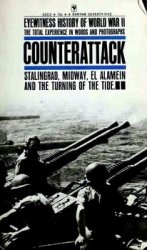The reforms of the Roman army by Diocletian and Constantine separated
it from the civil administration, so that governors of provinces no longer
commanded a provincial army, although they were still responsible for
raising funds to support it. The army was divided into two parts: there
were troops protecting the borders, the limitanei, under the command of
duces; and there was a field army, the comitatenses, which was mobile and
organised in divisions under the command of the magistri militum. In
addition there were the palace troops and the imperial bodyguard, whose
titles changed throughout the fifth and sixth centuries.
By the ninth century a quite different system had emerged, with the
army divided into divisions called themes, based in provinces also called
themes (themata), each under the command of a strat¯egos. There is no
general agreement about how quickly this change took place, or why: was
it the result of some planned reorganisation, or simply a fumbling reaction
to the problems of the seventh and eighth centuries? There is, however,
general dissent from the theory which once commanded much support,
and is associated with the name of the greatByzantinistGeorgeOstrogorsky,
which saw the thematic army as the result of a deliberate reorganisation of
army and empire by Heraclius. The result, supposedly, was a peasant army,
based in the themes, in which land had been allotted to peasant families as
small holdings, in return for each family providing and equipping a soldier.21
This somewhat romantic idea of the middle Byzantine empire resting on
the popular support of a free peasantry has been generally abandoned.
The transition is now thought to have occurred after Heraclius’ reign, and
change was probably gradual.
Part of the problem is terminology. The word theme originally meant a
military unit, and references to themes in sources relating to the seventh
century may refer to military units, rather than to the land where they
were stationed. But even if it seems that the reference is to territory, we
cannot be sure that such a reference is not an anachronism, since our
sources date from the ninth century when territorial themes were in place.
As with the changes in civil administration already discussed, it is possible –
indeed likely – that the two sets of arrangements overlapped; even though
there are references to strat¯egoi and themes in the seventh century, there
is still mention of provinces (eparchiai), governors, and use of such titles
as magister militum well into the eighth century. While it is impossible to
provide a detailed timescale, one can reasonably suggest that the themes
developed in the following way. After the Byzantine army was defeated by
the Arabs, the troops retreated over the Taurus mountains into Anatolia.
The years following the defeat saw continual raiding by Muslim forces
into Anatolia, leading finally in the 660s and 670s to a concerted attempt
by Mu‘awiya to advance across Asia Minor and take Constantinople (see
above, pp. 232–3 and below, p. 372). In this prolonged crisis, the Byzantine
armieswere stationed in the provinces of AsiaMinor. They would have been
provisioned in the traditional way, by a levy raised by the local governors
from the civilian population. The areas that came to be called the themes
of the Armeniakoi and the Anatolikoi were the groups of provinces where
the armies commanded by the magistri militum per Armeniam and per
Orientem took up their stands. The theme of the Thrakesioi covered the
provinces in western Anatolia to which the army of the magister militum
per Thraciam withdrew after the Arab victories in Syria and Palestine. The
theme of the Opsikion was made up of the armies of the magistri militum
praesentales, some of which had probably long been established in the area
just across the Bosporus from Constantinople. The name derives from the
title of the officer (comes Obsequii) who, during the reign of Heraclius, was
appointed to command the praesental armies on the emperor’s behalf. The
Karabisianoi, the fleet, formed part of the old quaestura exercitus, probably
based at Samos (see also below, p. 267). It seems likely that the army corps
took up the positions into which they would become embedded sometime
around the middle of the seventh century. Why and at what stage the
civil administration declined, to be replaced by the military government of
the strat¯egoi, is much less clear. Presumably the overriding need to supply a
standing army, together with the decline of the ancient, city-based economy,
meant that the strat¯egoi, backed up by the increasingly powerful officials
forming part of the imperial court, gradually assumed the functions of the
old governing elite. The elite lost much of its raison d’ˆetre because of the
court-centred nature of the civil administration.




 World History
World History









